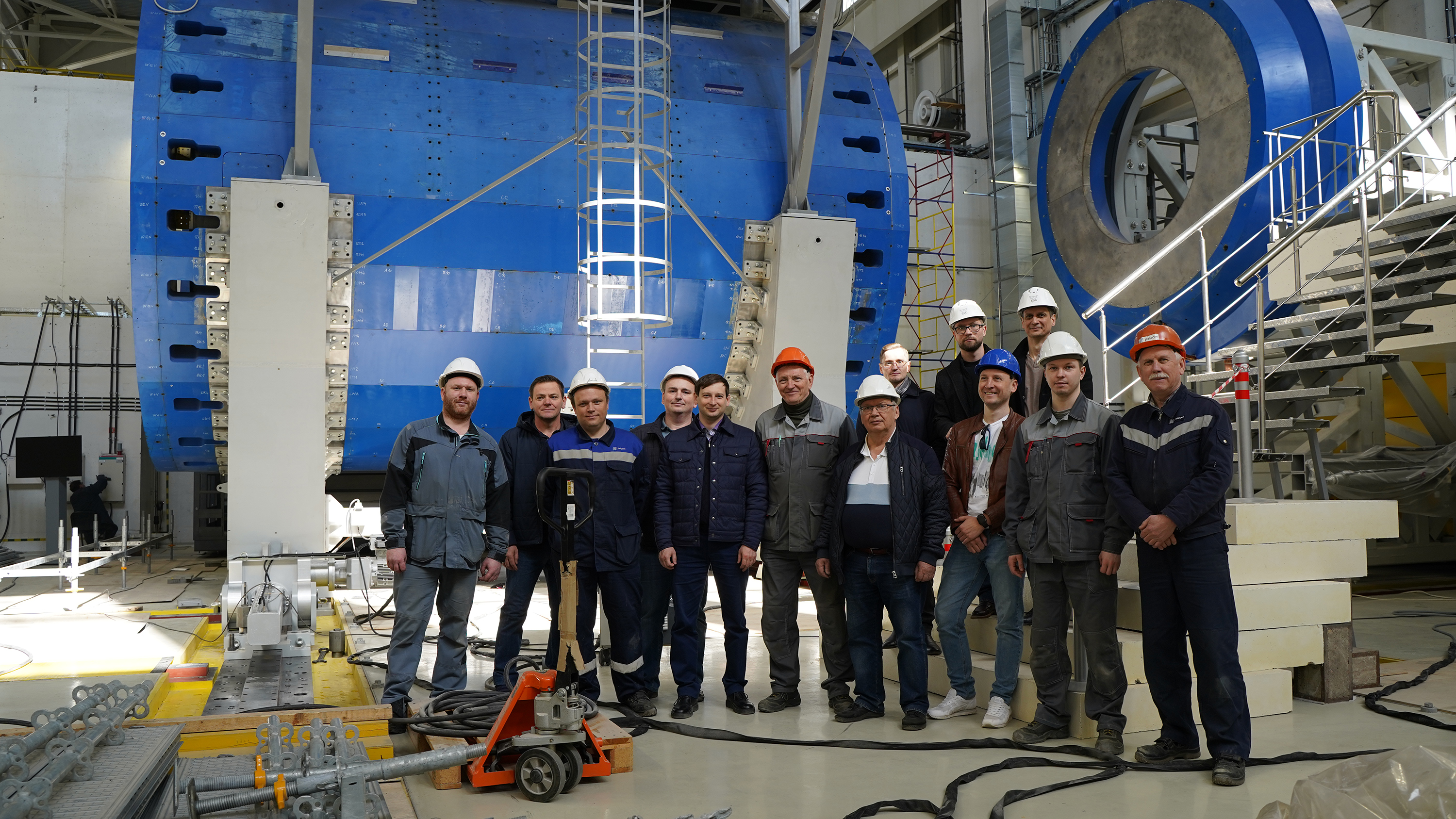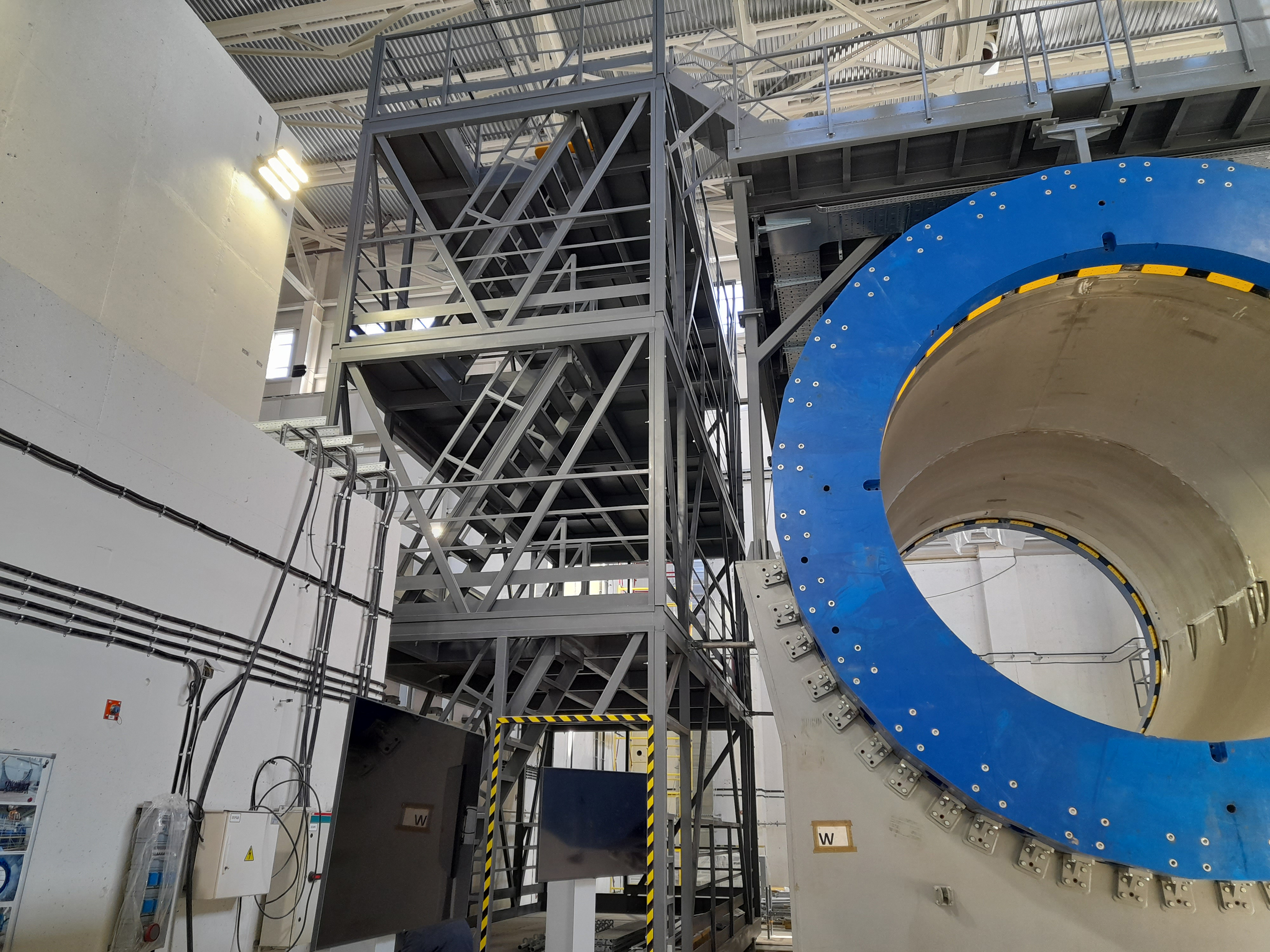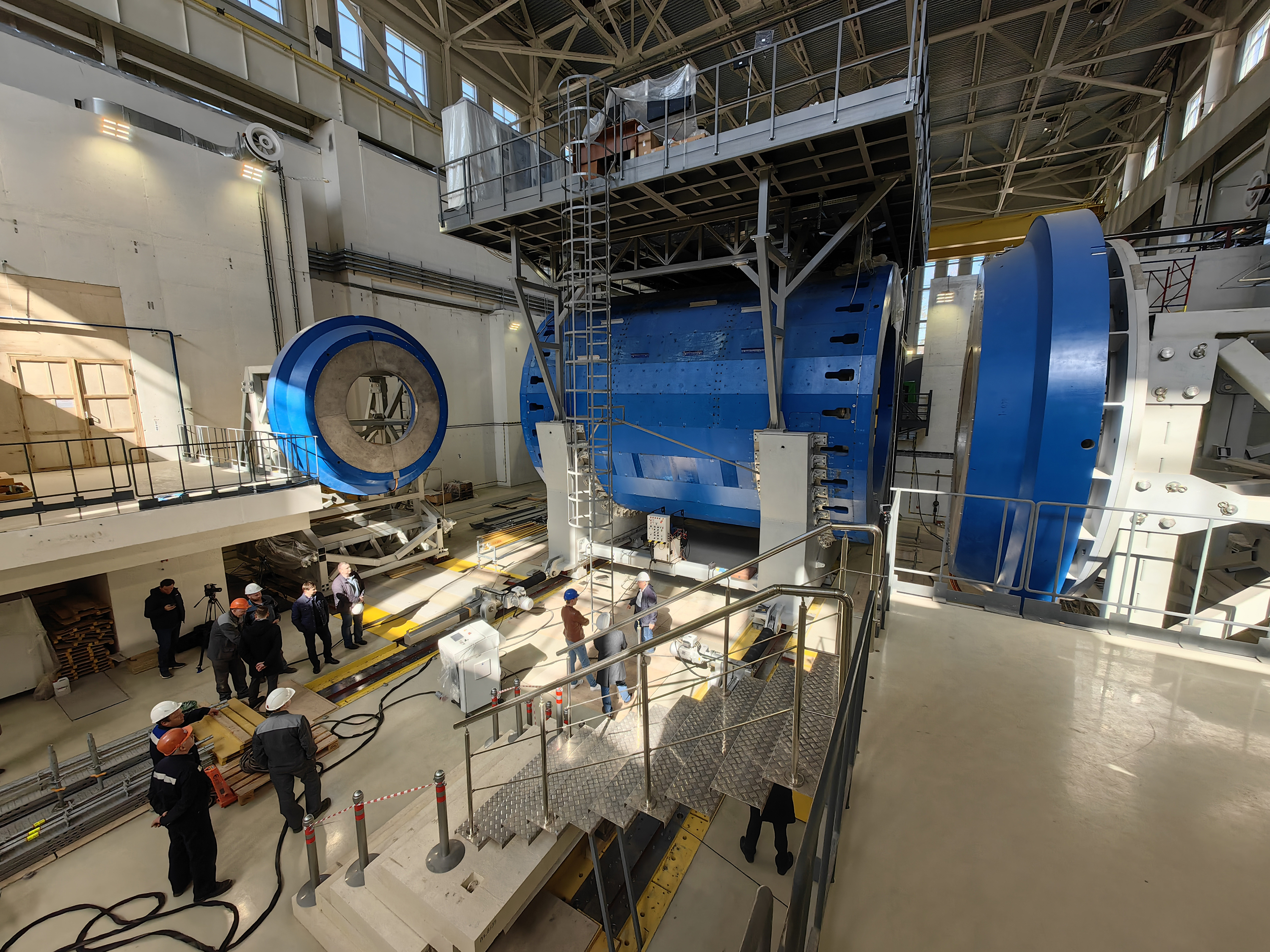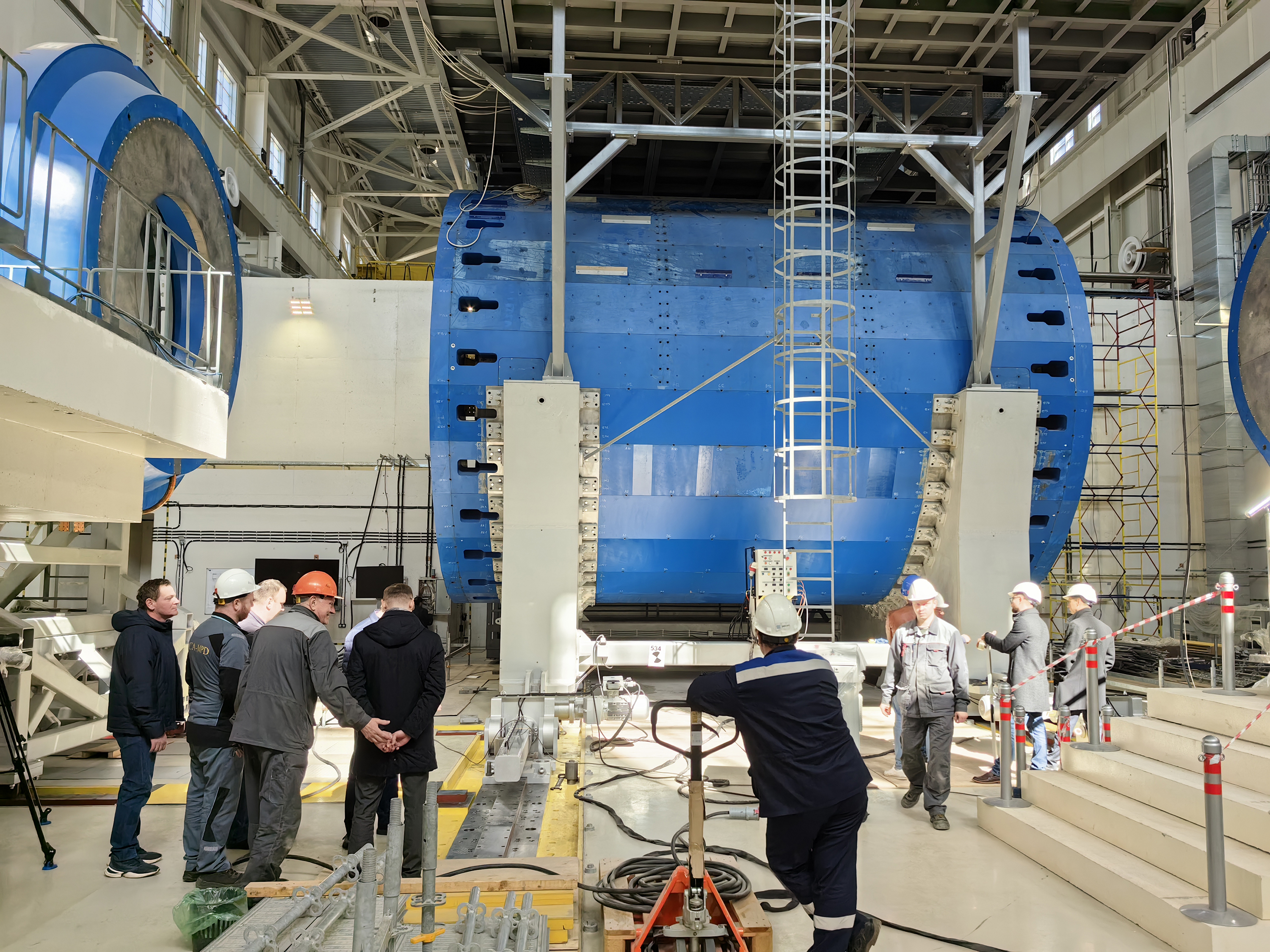First relocation of MPD solenoid in current configuration
News, 17 April 2023
On 14 April, specialists moved for the first time the 800-ton superconducting solenoid in the current configuration in the Multi-Purpose Detector (MPD) pavilion of the NICA Accelerator Complex in the Laboratory of High Energy Physics JINR. In addition, inseparably from the solenoid, they moved the side platform for electronic equipment designed for reading data from MPD detectors. The relocation was required to solve the problems of electronics installation and became a good rehearsal of this complex technological manipulation for the project team.
The MPD configuration now includes the solenoid itself, which is a huge magnet of over 5 metres in diameter, the magnet yoke, in which it is installed, and the upper platform with partially placed cryogenic equipment. Specialists moved the construction with the side platform by 1.8 m from the wall due to technological reasons as they are going to begin the installation of equipment. Experts placed a weight of about 13 tons at the side platform of the magnet, simulating the total mass of the equipment planned to be installed here by the end of May.
Head of the VBLHEP Sector of the Engineering Support of the MPD Facility Alexander Fediunin is responsible for preparing the platform for the installation. As he explained, it would be a completely isolated space at the end. Specialists will locate eight racks for electronics and power supply and four air conditioners on each of the four levels of the platform. Water-cooled air conditioners will maintain the necessary microclimate and temperature at the level of 30 – 38 ˚С. It is necessary for the correct operation of high-speed electronics. Specialists will complete installations at the platform in September this year, after the first cooling of the magnet down to 80 K, which a priority at the moment.
They will continue moving the magnet by more than four metres to the final position, the so-called beam position, after they will complete the construction of the collider ring and prepare the MPD Detector for experiments. According to VBLHEP Deputy Chief Engineer, NICA/MPD Chief Designer Nikolay Topilin, experts will align the operation position of the magnet with accuracy of up to tenths of a millimetre.
VBLHEP Deputy Chief Engineer Konstantin Mukhin, responsible for the commissioning of the magnet, spoke about further plans. “Specialists are carrying out installation according to the schedule. We have coped with the difficulties of partial delivery of equipment from European partners, as well as the lack of complete documentation from ASG Superconductors, ILK, and others. We re-order equipment and system elements or develop our own. Our design bureau works very well, as well as the MPD team, which is involved in the adjustment. Moreover, a deep immersion in the issue and new developments have already borne fruit. Thus, specialists have completely developed the connection unit between the solenoid and the cryogenic system. It is now much more reliable and easier to repair,” Konstantin Mukhin highlighted. He said that one of the challenges was to adjust the refrigerator, i.e. one of the main elements of the magnet cooling system, which specialists received disassembled. In addition, its control system was not adjusted. These tasks have been already solved. Moreover, it is planned to relocate the refrigerator at the technological cryogenic platform and connect it with the rest of the equipment.
In mid–May, the project team is going to start pumping the solenoid to its working vacuum inside the cover. In late May – early June, specialists plan to start cooling the magnet to check the operability of all the touch sensors and systems. This will be the first cooling of the solenoid. “At the same time, we will not move the magnet because we will additionally check the operability of the cooling system in the current position of the magnet. Any movement of an object of such a large volume and weight is a complex, responsible, and dangerous operation,” Konstantin Mukhin explained.
In June, specialists will cool the magnet down to a temperature of 80 K. “Meanwhile, we will be able to gain invaluable experience and experimentally determine the optimal equipment performance for safe and smooth cooling of the solenoid,” the scientist said.
By December, when the magnet’s infrastructure and power supply are fully ready, the project team is going to cool the magnet down to 4.5 K, the operating temperature of the superconducting coils. After that, specialists will measure the magnetic field and take its map, which will make it clear how homogeneous the field is in the detector volume.



